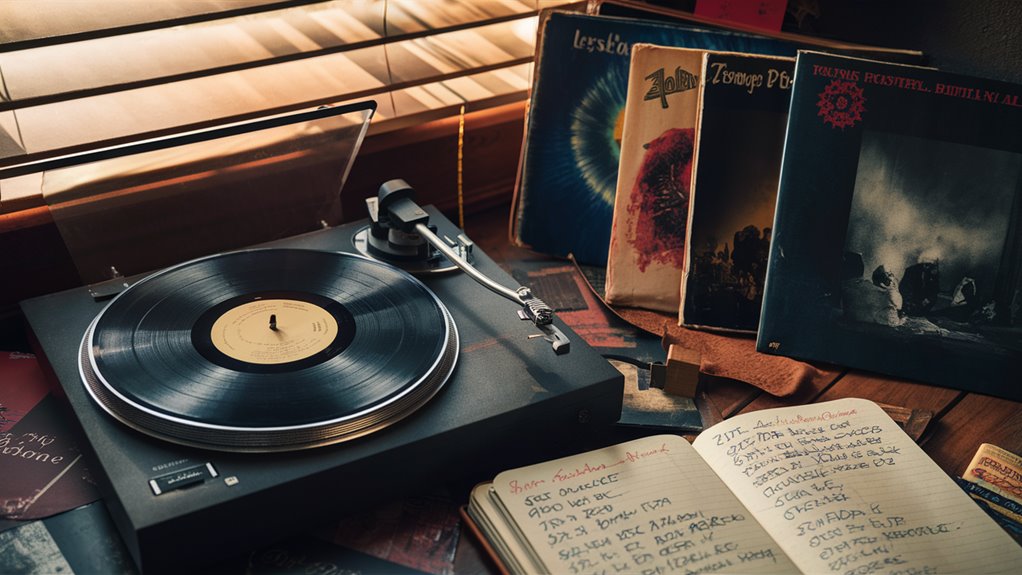Key Karaoke Tips for New Singers: Learn the Craft of Stage

Picking the Best Songs
Begin your karaoke path by choosing songs that fit your voice well. Stay away from challenging songs with big vocal jumps until you feel more skilled. Stick to well-liked songs that suit your voice and make you feel at ease. 호치민 밤문화 팁 더 보기
Practice Often
Spend 30 minutes each day working on your songs. Work on your breathing skills and know the words by heart. Record your singing to identify weak spots and track your improvement.
Using the Microphone Right
Keep the microphone at a 45-degree angle, about 2-3 inches from your lips. Adjust the distance to maintain even sound levels across varying parts.
Growing Your Confidence on Stage
Group Songs First
Singing in a group or well-known song parts helps you acclimate to the stage. This reduces stress and allows learning from experienced singers.
Connecting with the Crowd
Make eye contact with individuals in the crowd to build a connection. Use strong body moves to enhance your performance while maintaining vocal control.
Getting Better
As you build confidence, tackle more challenging songs and new singing skills. Focus on tone, timing, and emotion to enhance your performances.
Choose Songs That Fit Your Voice
How to Pick Songs That Match Your Voice for Karaoke
Finding Your Real Voice Range
Knowing your voice range is essential for karaoke success. Sing alone to find your natural and strong-sounding range.
Picking the Right Songs
For beginners, songs with one octave are manageable. Seek songs with consistent pitch.
Tips for Advanced Song Choices
Avoid songs by artists like Mariah Carey and Whitney Houston, known for wide voice ranges, until you develop further. Stick to comfortably manageable songs.
Taking Care of Your Voice
Watch for signs of voice strain. Keep within your known range to preserve your voice and maintain performance quality. Connecting with the crowd relies on confident delivery rather than high-pitched vocal challenges.
Making Your Show Better
- Exercise breath control fitting your range
- Stay on pitch within comfortable zones
- Maintain voice strength throughout the song
- Feel confident in your song choices
Practice Leads to Perfection
Practice Well to Master Karaoke
Routine Practice Every Day
Set aside 30 minutes daily with divided focus: 10 minutes for warming up, 15 minutes for difficult parts, 5 minutes for a full song run-through.
Recording and Checking Yourself
- Use audio recording tools for improvement
- Check tune, timing, and diction
- Focus extra practice on challenging sections
Smart Ways to Pick Songs
Create a practice playlist with:
- 3-4 songs in rotation
- Original and karaoke track practice
- Initial artist-accompanied singing, then music-only
- Thorough learning of words and breath points
- Preparation for live performances
Know the Microphone Well
Getting the Best from Your Microphone for Karaoke

Must-Know Tips on Handling the Mic
Proper microphone use differentiates new singers from pros.
The Best Way to Hold and Place the Mic
- Hold at a 45-degree angle, 2-3 inches from the face
- For high notes, pull back slightly
- For soft parts, move closer
- For loud parts, maintain distance
How to Hold the Mic Right
Keep a firm yet comfortable grip. Avoid blocking or interfering with microphone components.
Controlling the Sound Setup
- Identify speaker placements and sound reflections
- Adjust positioning based on acoustics
Advanced Ways to Handle the Mic
- Learn from pro singers for advanced techniques
- Volume control through mic distance adjustments
- Prevent sound issues proactively
Keep Your Breathing Right
Perfecting Your Breathing for Karaoke
Basics of Diaphragmatic Breathing
Effective breathing via diaphragmatic methods is foundational for vocal control and pitch stability.
Plan Your Breathing
Strategically plan breathing moments within songs to sustain vocal strength.
Top Breathing Methods
- Employ two-way breathing through both nose and mouth
- Manage microphone positioning during breaths
- Gradually tackle longer phrases
Touch Base with Your Crowd
Linking with Your Karaoke Crowd
Being Present on Stage
Stage presence involves more than vocal performance – it’s about genuine connection.
Using Your Body to Reach People
- Maintain a confident stance
- Incorporate audience engagement strategies
Seeing and Reacting to How the Crowd Feels
- Danceable songs require energetic performances
- Slow songs benefit from intimate delivery
Start with Singing in a Group
Begin Karaoke with Group Songs
Why Group Singing Helps New Singers
Group karaoke encourages emerging singers by providing support within shared performances.
Picking Songs for Groups
- Duets and small group songs develop essential techniques
- Opt for pieces with clear parts and harmonies How to Find Karaoke Bars That Offer VIP Services
Tips to Get Ready for Group Wins
- Designate roles and transitions
- Plan harmonies and backup vocals effectively
This structured approach aids in focusing on enjoyment while executing well.




